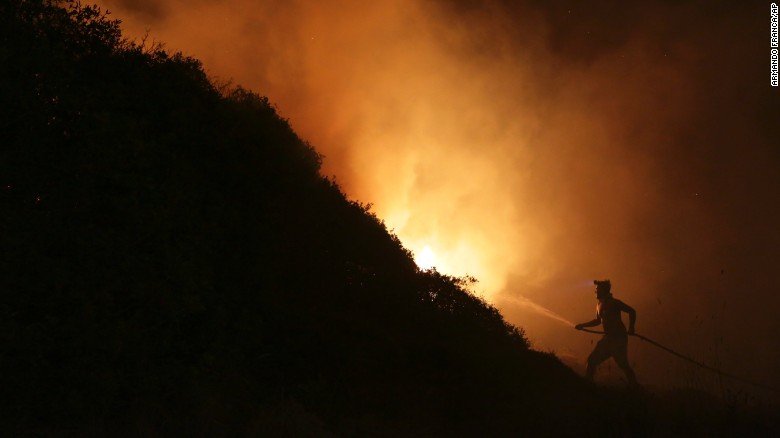Nearly 20,000 residents in western Canada remained on alert on Wednesday as a wildfire swept across Mount Underwood, overlooking the city of Port Alberni.
The blaze, which has grown to roughly 8.6 square kilometres (3.3 square miles), has already prompted evacuation orders for nearby campsites, according to the BC Wildfire Service.
“I’ve lived in Port Alberni since 1956, and this is one of the biggest fires we’ve ever seen,” said Russ Wetas, 69, as thick smoke from the mountain filled the skies. The wildfire service has classified the Mount Underwood blaze as “out of control,” meaning further spread is expected.
Authorities have not confirmed whether Port Alberni, located about 10 kilometres (6.2 miles) north of the fire, will be evacuated. On the other side of the country, in Newfoundland and Labrador, parts of the capital, St. John’s, were evacuated on Tuesday after several days of intensifying wildfires. In Nova Scotia, another fire was reported burning on the outskirts of Halifax, a city of nearly half a million people.
This year marks Canada’s second-worst wildfire season since records began in 1983, with 7.4 million hectares (18.3 million acres) already scorched — an area almost the size of Panama. The figure surpasses the 7.1 million hectares burned in 1995 but remains far below the record 17.3 million hectares lost in 2023.
Smoke from this year’s fires has triggered air quality alerts for tens of millions in both Canada and the United States, with haze drifting as far as western Europe. As of Wednesday, more than 700 wildfires were active across the country, 161 of them out of control, affecting nearly every province and territory.
Experts warn that wildfire activity near the coast is on the rise. Mount Underwood, located on Vancouver Island, reflects a worrying trend. Historically, coastal regions rarely experienced large blazes, but climate change has increased their frequency, even if they tend to be less intense than those inland.
“This is a fire that hasn’t been seen on Vancouver Island,” said John Jack, a First Nations chief and regional official, in an interview with CBC.
Ted Hagard, an employee at Port Alberni’s paper mill, said he had been tracking the fire online but felt compelled to see it for himself. “It’s insane how huge it is,” the 46-year-old remarked from a lakeshore near the mountain.
Scientists link the trend to climate change, which has brought higher temperatures, reduced snow, shorter winters, and earlier summer conditions — all factors that create a more fire-prone environment.











